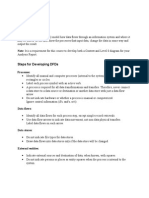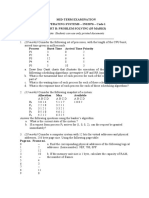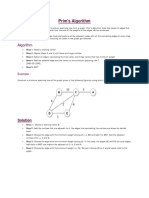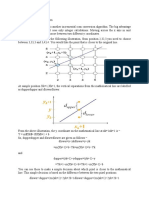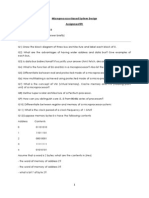Suppose the fan out of a module is: 4, the cumulative number of variables passed to
and from the module is: 47, and the complexity of the module is: 40. Use Card and
Glass's Systems Complexity in order to find out the structural complexity, data
complexity and system complexity of the module.
Given:
• Fan-out fout(k) = 4
• Cumulative number of variables tot_var(k)= 47
• Complexity of the module M = 40
Step-by-Step Calculation:
Step 1: Calculate Structural Complexity S(k)
S(k) = fout(k)2
S(k) = 16
Step 2: Calculate Data Complexity D(k)
D(k) = tot_var(k)/ fout(k)
D(k) = 9.4
Step 3: Calculate System Complexity (Sy)
Sy=S(k)+D(k)
=16+9.4
=25.4
Thus
1. Structural Complexity (S): 16
2. Data Complexity (D): 9.4
3. System Complexity (Sy): 25.4
There is a confusion of henry and kufra’s complexity formula: we found two types
of formula:
1. length(X)×(fan_in(X)+(fan_out(X))2 [we are using this]
2. length(X) x (fan-in(X) x fan-out(X)
�The fan in and fan out of module X is 3 and 4 respectively. The complexity of the
system is 2000. The number of lines in module X is 200, i.e LOC of module X is
LOC(X) =200. Calculate the structural complexity of module X using card and
glass’s system complexity. Using combined Henry Kafura’s approach and Card
glass’s approach calculate the data complexity of module X.
Solution:
Given
• fan_in(X)=3
• fan_out(X)=4
• length(X)=200 (lines of code)
Structural Complexity (using Glass and Card's approach):
S(X)=(fan_out(X))^2=(4)^2=16
Data Complexity (using Glass and Card's approach):
tot_var(X)=fan_out(X)+fan_in(X)
=4+3=7
D(X)=tot_var(X)/(fan_out(X)+1)
=7/(4+1) = 1.4
Complexity (using Henry and Kafura's approach and Glass and Card's
approach):
Using Henry and Kafura's approach:
M=length(X)×(fan_in(X)+(fan_out(X))2
=200×[3+4]2=200×49=9800
Using Glass and Card's approach: Sy(X)=S(X)+D(X)=16+1.4=17.4
So,
1. Structural Complexity: S(X)=16
2. Data Complexity: D(X)=1.4
3. Information Flow Complexity (M): M=9800
4. System Complexity (Sy(X)): Sy(X)=17.4


